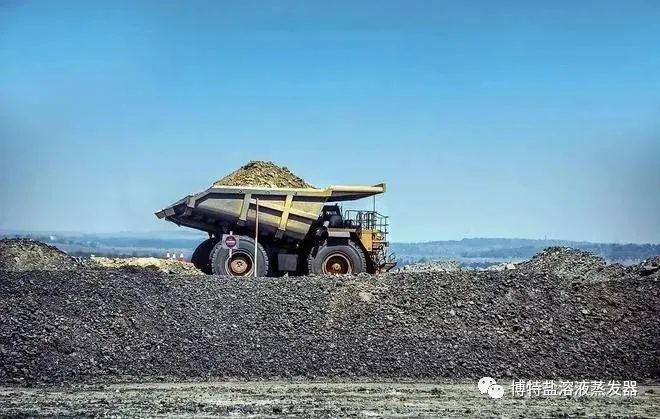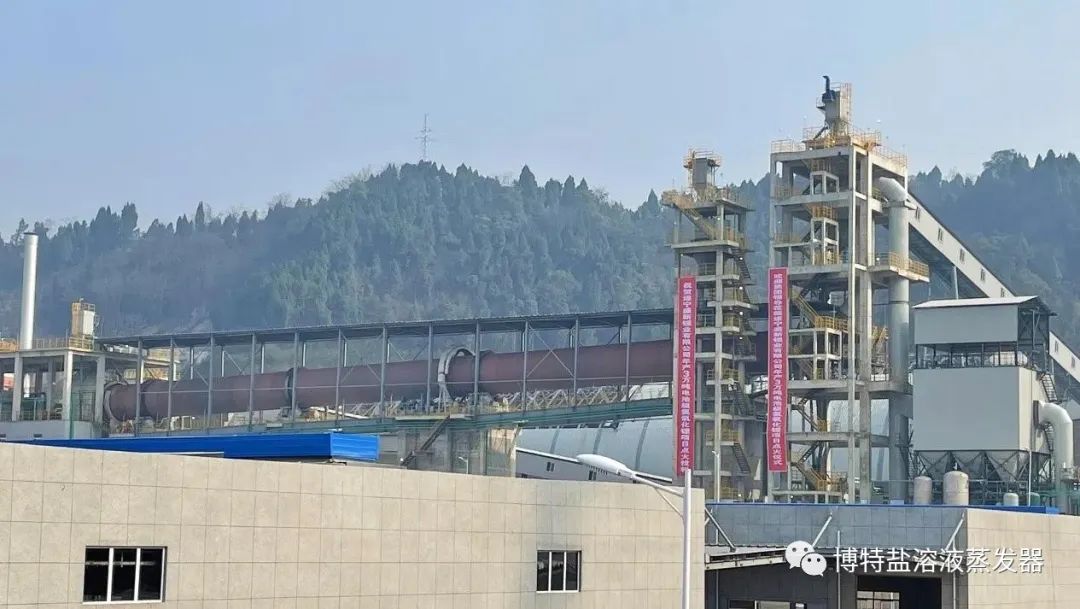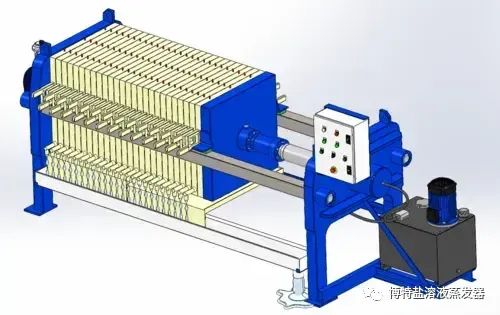The production of lithium carbonate from spodumene involves two relatively independent processes: pre roasting to produce brine and brine to produce lithium carbonate. The production of brine from spodumene includes eight small steps: drying, roasting, cooling, crushing, grinding, acidification, water immersion, and solid-liquid separation.

Australian Spodumene
1、 Drying: The moisture content of spodumene purchased for the project is usually 8%. In order to not affect the subsequent roasting process, the material needs to be dried. The drying is carried out in a rotary drying kiln, with a drying temperature of about 250 ℃ and a duration of about 15 minutes. The hot air comes into direct contact with the material. After drying, the moisture content of spodumene is about 6.5%, and the drying process can reduce the gas consumption in the subsequent roasting process. The drying heat source comes from the waste heat of the rotary kiln exhaust gas (in order to achieve energy conservation and consumption reduction, a portion of the hot flue gas with a waste heat of about 250 ℃ from the rotary calcination kiln exhaust gas is introduced into the drying kiln through fans). All collected dust from drying will be used for the calcination process.
2、 Roasting: After drying, the lithium pyroxene enters the high-temperature roasting room of the rotary kiln for roasting (using coke oven gas as fuel, and a spray gun is set in the middle section of the tunnel type roasting kiln for direct combustion). The rotary kiln uses coke oven gas as fuel and conducts high-temperature roasting of the raw materials through direct heating. The sintering temperature is controlled to be 1100-1200 ℃, and the roasting time lasts for about 2 hours.

Rotary kiln
After the calcination is completed, the spodumene raw material is α Transformation of type spodumene into β Type spodumene transforms lithium from an acid insoluble structure to an acid soluble structure, with a conversion rate of 95-98%.
The transformation process equation is:α-Li2O·Al2O3·4SiO2→β-Li2O·Al2O3·4SiO2
3、 Cooling: When the material is roasted at high temperature, due to the melting of some materials, the sintered material will have a certain strength and needs to be cooled. It enters the cooling kiln and is forced to cool to around 90 ℃. The cooling time after roasting is 1.5 hours.
4、 Crushing: The cooled clinker is transported to the crusher using a closed chain conveyor to prevent large pieces of clinker from entering subsequent processes. The clinker is crushed to a particle size of about 10mm and then fed into the vertical mill system through a closed belt conveyor.
5、 Grinding: In order to facilitate subsequent leaching operations and dissolve the clinker more fully, the crushed clinker needs to be further ground. The material is fed into the grinding disc of the vertical grinding system through a belt weighing scale, and under the action of centrifugal force, the material moves towards the periphery of the grinding disc. When the material passes between the grinding disc and the grinding roller, it is compressed and ground into powder under the action of compression force. The material powder particles that have been ground continue to move outward and are finally thrown towards the edge of the grinding disc; Relying on the negative pressure formed by the suction of the main exhaust fan, the slightly hot desiccant gas enters the mill from the inlet of the vertical mill and passes through the outer edge of the grinding disc from bottom to top; The material powder particles are carried up by the slightly hot desiccant gas, and the heavier and coarse material powder particles in the separator collide with the blade baffle of the separator and return to the grinding disc for further grinding; Lighter and smaller material powder particles are collected by the powder collector through the separator; The separator device on the upper part of the vertical mill screens the ground material, and the material powder with unqualified fineness is separated from the vortex along the inner wall of the inner cone and returned to the grinding plate for further grinding. The material with a particle size below 100 mesh after grinding enters the next process.
6. Acidification: Crushed to below 100 mesh β Type spodumene and 98% concentrated sulfuric acid are mixed and acidified on a mixer (in a ratio of 2.5-3.5:1). The mixture is transported to two acidification kilns through a feed screw conveyor. The acidification kilns are heated by a hot air furnace that burns coke oven gas, using an external indirect heating method. The reaction temperature is controlled at 250-300 ℃, and the duration is about 10 minutes, β Type spodumene will undergo a complete salinization reaction with sulfuric acid, and the reaction equation is as follows:
Li2O·Al2O3·4SiO2 +H2SO4→Li2SO4 + H2O·Al2O3·4SiO2
At the same time, the following side effects also occurred:
Na2O·Al2O3·4SiO2 + H2SO4→Na2SO4 + H2O·Al2O3·4SiO2
K2O·Al2O3·4SiO2 +H2SO4→ K2SO4 + H2O·Al2O3·4SiO2
MgO·Al2O3·4SiO2+H2SO4→ MgSO4 + H2O·Al2O3·4SiO2
CaO·Al2O3·4SiO2+ H2SO4→ CaSO4 + H2O·Al2O3·4SiO2
Fe2O3 +3H2SO4→Fe2(SO4)3 +3H2O
ZnO + H2SO4→ZnSO4 + H2O
TlO2+ H2SO4→TlOSO4+ H2O
When the material undergoes a salinization reaction, resin impurities are removed between the aluminosilicate core of spodumene and sulfuric acid, and the exchange results in the lithium in spodumene being replaced by hydrogen, while the mineral structure is not actually damaged. The acidified material after the salinization reaction is sent to the cooling kiln by a screw conveyor, which is indirectly water-cooled to below 80 ℃ before entering the subsequent leaching process.
The design of the acid roasting device is divided into four parts: raw material unit, acid roasting unit, cooling storage unit, heating unit, etc.
(1) Raw material unit
① Fine calcined spodumene feeding, weighing and measuring process.
In the fine roasting material warehouse β Spodumene enters this unit, is weighed and measured by a closed weighing feeder, and then put into a double screw mixer.
② Concentrated sulfuric acid transportation and metering process.
Concentrated sulfuric acid is transported through pipelines from the sulfuric acid tank area in the factory area to the metering tank, and then pumped to the double screw mixer through the sulfuric acid feeding pump.
(2) Acid roasting unit
① β Lithium pyroxene fine powder (100 mesh) flows into the weighing scale by gravity from the bottom outlet of the fine powder silo.
② Measurement scales generally use spiral scales, rotor scales, Coriolis force scales, etc. In this project, Coriolis force scales are used.
③ The measurement scale outlet is connected to a screw conveyor, and the speed of the screw conveyor is controlled by the reading of the Coriolis force scale, thereby controlling the feeding amount of spodumene powder.
④ The screw conveyor outlet is connected to the mixing machine.
⑤ Mixers generally use single screw mixers, screw belt mixers, and double screw mixers. This project adopts a double screw mixer.
⑥ 98% sulfuric acid is sent from the storage tank to the mixer through a fluorine lined magnetic pump.
⑦ Install flow meters and regulating valves on the sulfuric acid pipeline.
⑧ Control the mass flow rate of sulfuric acid through spodumene mass flow rate.
⑨ Sulfuric acid is sprayed into the mixer through a multi-point nozzle and mechanically mixed with spodumene fine powder. The mixture is called acid mixture.
⑩ The mixed acid material is then fed into the acidification kiln through the inlet spiral and the kiln tail cover.
(3) Acid clinker cooling storage unit
The acidified material coming out of the furnace tail is sent by spiral to the cooling kiln for cooling to below 80 ℃. The cooling kiln adopts indirect cooling with chilled water, and the cooled acidified clinker is sent to the wet process section in the factory.
(4) Heating unit
The heating system of this project adopts the form of a hot air circulation system (hot air circulation) supplied by a coke oven gas hot air stove.
The coke oven gas sent by the pipeline and the preheated air sent by the air fan are burned in the hot air furnace. The hot flue gas generated by the combustion is mixed with the circulating hot flue gas sent by the high-temperature circulating fan in the tail section of the hot air furnace. After being regulated by the valve in the hot air pipeline, it enters the jacket of the acidification kiln to provide heat to the furnace body. Most of the hot flue gas is circulated in the heating system, and a portion of it is preheated with air and discharged through the chimney. Each air duct in the system is equipped with regulating doors, which can meet different heating temperature requirements for each section of the furnace body. The smoke exhaust duct is equipped with a regulating valve to regulate the balance of system air pressure.
Operating conditions and control parameters: Control the reaction temperature from 250 ℃ to 300 ℃, determine the amount of sulfuric acid feed based on the amount of effective component Li2O in the ore, maintain a free acid content of 20-22% in the mixed acid material, and determine a feed acid ratio of about 2.5-3.5. The residence time of the material in the roasting furnace is about 30 minutes. The free acid content in the acid clinker is 2-6% under normal pressure.
7、 Water immersion: The acid cooled spodumene acid clinker contains about 2-6% sulfuric acid, which is transported by a buried scraper conveyor into the slurry tank through the acid clinker bin. The acid clinker slurry is then mixed with lithium slag washing solution, resin regeneration water, and condensate water in a liquid solid ratio of about 1.6:1 to form an acidic acid clinker slurry (the temperature of the acid clinker after cooling is about 40 ℃, and it enters the closed leaching tank below the liquid level through the discharge channel), and then sent to the neutralization tank. Limestone is added Lime neutralizes residual sulfuric acid. Limestone and quicklime are fed into the neutralization tank by a feeder through a buried scraper conveyor. The pH meter in the neutralization tank controls the speed of the feeder, thereby controlling the amount of limestone and quicklime added. After the pH reaches 6-6.5, stop feeding and the neutralization reaction lasts for 20 minutes. After leaching, lithium enters the liquid phase (neutralization slurry) from the solid phase, and the lithium leaching rate reaches about 98%. The neutralization slurry is pumped into the filter press by the slurry pump for subsequent operations.
Reaction equation:
CaCO3 +H2SO4→CaSO4 + CO2↑+H2O
CaO+H2SO4→CaSO4 +H2O
Operating conditions and control parameters: leaching temperature 40 ℃, liquid-solid ratio 1.6:1, leaching time 2-3 hours, atmospheric pressure.
八、Solid liquid separation:
After the neutralization slurry is pumped into the filter press, it undergoes processes such as filtration, washing, pressing, blowing, and unloading to obtain wet lithium slag, lithium sulfate filtrate, and lithium slag washing solution, respectively.

Plate and frame filter press
Filtering: The neutralization slurry is pumped into the filter press for solid-liquid separation. When the flow rate of the slurry pump decays to about 5m3/h, the filter press stops feeding. The filtered filtrate is mainly lithium sulfate filtrate, which is temporarily stored in the filter tank before entering the impurity removal process.
Washing: The lithium content in the filter residue obtained from solid waste separation is still relatively high. Through online washing with condensate water, as much lithium sulfate solution as possible can be leached out from the lithium residue. The solution obtained from leaching is the lithium residue washing solution, which is returned to the leaching process for acid clinker slurry preparation.
Pressing: After washing, the lithium residue continues to be pressed, and the filtrate is returned to the leaching process for acid clinker slurry preparation.
Drying: After the pressing is completed, the lithium residue is blown and drained with 0.7MPa wet air, and the drained water is returned to the leaching process for acid clinker slurry preparation. The moisture content of the drained lithium slag is less than 20%.
Unloading: Use a belt conveyor to treat the leached residue after pressure filtration as solid waste.

Salt solution evaporator
- Home
-
About us
About us
- News
News- Products
Products- Project
Project- Investor
Investor- Contact
Industry News
Industry NewsProduction process of lithium carbonate from spodumene
2023-12-02
- Previous: What is a rotary kiln?
- Next: The adjustment of the kiln centerline
Copyright © 2025 Jiangsu Pengfei Group Co.,Ltd. All Rights Reserved. - News


